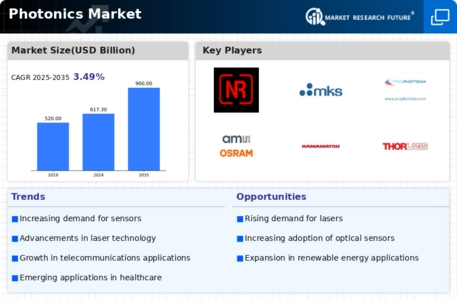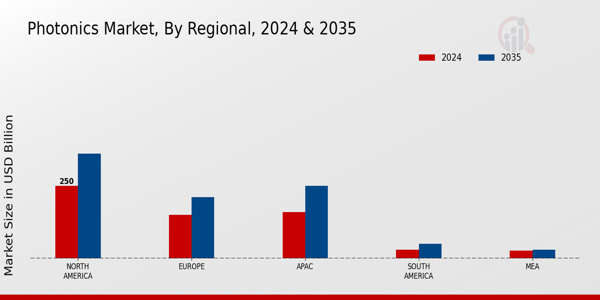Photonics Market Summary
As per Market Research Future Analysis, the global photonics market is poised for significant growth, driven by advancements in technology and increasing demand for energy-efficient solutions across various sectors. The market was valued at 764.30 USD Billion in 2024 and is projected to reach 1693.75 USD Billion by 2035, reflecting a CAGR of 7.50% from 2025 to 2035. Key applications include telecommunications, medical technologies, and consumer electronics, which are all experiencing robust growth due to the integration of photonics technologies.
Key Market Trends & Highlights
The photonics market is influenced by several key trends and drivers.
- The demand for high-speed communication technologies is surging, with global internet traffic expected to triple by 2025, reaching 175 Zettabytes.
- Advancements in medical technologies, particularly laser systems, are driving market growth, with over 16 million minimally invasive surgeries performed annually.
- The adoption of photovoltaic technologies is increasing, with solar energy capacity expected to exceed 1,000 gigawatts in the next five years.
Market Size & Forecast
| 2024 Market Size | USD 764.30 Billion |
| 2035 Market Size | USD 1693.75 Billion |
| CAGR (2025-2035) | 7.50% |
Major Players
Key companies in the photonics market include Nikon, Corning, Illumina, Qorvo, Apple, Thorlabs, Sony, Hamamatsu Photonics, MKS Instruments, Siemens, and Oxford Instruments.





















